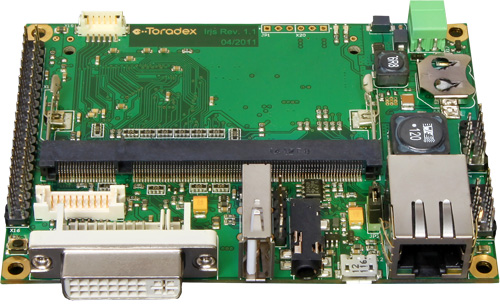Understanding electronic modules often depends on knowing their pin configurations. If you are working with the 30-008 Colibri module, having a clear idea about its pinout is essential. In this guide, we will cover everything you need to know about the 30-008 Colibri pinout, its functions, and practical applications.
What is the 30-008 Colibri?
The 30-008 Colibri is a compact and efficient computing module, often used in embedded systems. Designed for flexibility and high performance, it supports a wide range of industrial and commercial applications. Engineers and developers use it for tasks like machine control, medical devices, and portable electronics.
Why Understanding the Pinout Matters
Before integrating any module into your system, understanding its pinout is critical. The pinout tells you which pins are responsible for functions such as power input, data communication, and signal processing.
A wrong connection could damage the module or cause your project to malfunction. Therefore, knowing the 30-008 Colibri pinout helps you:
-
Ensure safe and proper connections
-
Maximize module performance
-
Troubleshoot issues effectively
-
Customize designs according to your project needs
General Overview of 30-008 Colibri Pinout
The 30-008 Colibri module features a well-organized pin structure to simplify integration.
Key areas covered by the pins include:
-
Power Supply: Manages the input and output voltages
-
Communication Interfaces: Handles protocols like UART, I2C, SPI
-
Peripheral Controls: Supports GPIO, PWM, and ADC
-
Multimedia Support: Includes signals for display and audio
-
Networking: Offers Ethernet and Wi-Fi capabilities (in some variants)
Let’s explore these sections in more detail.
Power and Ground Connections
Power pins are vital because they energize the module. On the 30-008 Colibri:
-
VCC Input Pins provide primary voltage supply.
-
GND Pins are used for grounding the system.
-
Some versions also have a battery backup input to maintain timekeeping and settings during power loss.
Important Note: Always verify the voltage range before connecting, usually 3.3V or 5V, depending on your model.
Communication Interfaces
For any embedded system, communication between devices is fundamental.
The 30-008 Colibri pinout includes:
UART (Universal Asynchronous Receiver/Transmitter)
-
Used for serial communication between the module and other devices like GPS units or modems.
-
Generally includes TX (Transmit) and RX (Receive) pins.
I2C (Inter-Integrated Circuit)
-
Supports communication between microcontrollers and peripherals like sensors.
-
Uses SCL (Clock) and SDA (Data) lines.
SPI (Serial Peripheral Interface)
-
High-speed communication for components like flash memory and displays.
-
Involves MOSI (Master Out Slave In), MISO (Master In Slave Out), SCLK (Serial Clock), and SS (Slave Select) pins.
These interfaces allow the Colibri module to be extremely versatile in different setups.
GPIO, PWM, and ADC Features
General-Purpose Input/Output (GPIO)
GPIO pins can be programmed for input or output as needed.
Common use cases:
-
Reading switch status
-
Driving LEDs
-
Controlling relays
Pulse Width Modulation (PWM)
PWM pins are useful for:
-
Motor control
-
Brightness control of LEDs
-
Audio signal generation
Analog-to-Digital Converter (ADC)
ADC pins allow analog sensors to send data to the digital module.
For instance:
-
Reading temperature sensors
-
Monitoring battery voltage levels
Display and Audio Connectivity
For multimedia projects, the 30-008 Colibri also offers display and audio pins.
-
Display Interface Pins support LCD screens with parallel or LVDS (Low-Voltage Differential Signaling) technologies.
-
Audio Interface Pins handle sound input/output, often through I2S (Integrated Interchip Sound) protocols.
This makes the Colibri module a great choice for interactive devices like kiosks and medical equipment.
Networking Options
Depending on the variant, the module may include:
-
Ethernet Pins for wired networking
-
Wi-Fi Interfaces for wireless communication
This connectivity ensures that the 30-008 Colibri can be integrated into IoT solutions smoothly.
Practical Applications of the 30-008 Colibri Pinout
The pinout versatility makes the module suitable for various industries:
| Application Area | Example |
|---|---|
| Industrial Automation | Machine controllers |
| Medical Devices | Portable diagnostic units |
| Smart Displays | Touchscreen kiosks |
| IoT Systems | Smart home hubs |
| Automotive | Infotainment systems |
Understanding the pinout ensures faster development and reduces chances of hardware errors.
Tips for Working with the 30-008 Colibri Pinout
-
Use the Manufacturer’s Documentation: Always cross-check your wiring with official datasheets.
-
Label Your Connections: To avoid mistakes during testing.
-
Test Gradually: Start by connecting power and ground only, then expand step-by-step.
-
Use Proper Tools: Employ good quality connectors and testing equipment.
-
Plan the Layout: Sketch the pinout and your design before starting the physical work.
Conclusion
The 30-008 Colibri pinout is a gateway to unlocking the full potential of this powerful embedded module. By understanding each pin’s role, you can create stable, reliable, and efficient projects. Whether you are building industrial machinery, medical instruments, or IoT devices, proper pinout knowledge makes the difference between success and frustration.
Always refer to the latest datasheet for the most accurate pin descriptions and follow best practices for design and testing. The Colibri module, when used correctly, can bring innovation and efficiency to your projects like never before.




